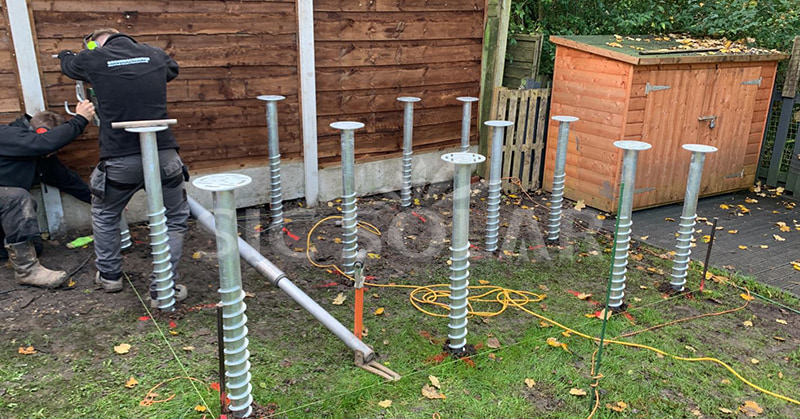How Are Ground Screws Installed?
Ground screws are an innovative and efficient foundation solution that can be used in a variety of building projects, including solar panel installations, fencing, and decking. Unlike traditional concrete foundations, ground screws offer a quick and environmentally friendly way to create a stable foundation without the need for excavation. In solar applications, they are a reliable anchoring method for ground-mounted photovoltaic systems. In this article, we’ll explore the step-by-step process of installing ground screws and why they are an excellent choice for solar mounting systems.
Step 1: Site Preparation
Before installing ground screws, it is important to assess site conditions to ensure stability and longevity. Here’s what needs to be done:
Soil Testing – Conduct a ground survey to determine the soil type and its bearing capacity. Sandy, clay, and rocky soils require different installation techniques.
Site Clearance – Remove any large rocks, debris, or obstructions that could interfere with the installation process.
Marking Locations – Mark the exact location of the ground screws based on the structural design of the solar mounting system.
Step 2: Drive the Ground Screws into the Soil
Once the site is prepared, the ground screws are installed using specialized machinery or hand tools, depending on the size of the project.
1. Manual Installation (For Small Projects)
For smaller applications, anchor screws can be installed manually using an anchor screw wrench or a metal rod as a lever:
Position the anchor screw at the marked location.
Insert the rod into the top hole of the anchor screw.
Turn the screw clockwise while applying downward pressure to penetrate the soil.
Continue turning until the screw reaches the desired depth.
Pros: Simple, cost-effective, minimal equipment required.
Cons: Labor-intensive, not suitable for hard or rocky ground.
2. Mechanical Installation (For Large Projects)
For commercial or large solar facilities, mechanical installation ensures precision and efficiency:
Use a hydraulic or electric ground screwdriver to insert the screw into the ground.
The machine applies a controlled force to drive the screw to the correct depth.
Check the alignment of the screw to ensure vertical positioning.
Pros: Faster, more precise, ideal for large solar projects.
Cons: Requires specialized equipment and operators.
Step 3: Check Stability and Alignment
After installation, check each ground screw for stability and proper alignment:
Leveling tools ensure the screws are installed at the correct angle.
A torque test can be performed to verify the holding strength of the screws in the soil.
Make any necessary adjustments before installing the solar mounting system.
Step 4: Connect the Solar Mounting System
Once the ground screws are firmly in place, you can connect the solar mounting system:
Secure the brackets or mounting rails onto the ground screws.
Then mount the solar panels to the mounting system.
Connect the wiring and grounding components to complete the solar system setup.
SIC Solar is a company that specializes in the production and sale of photovoltaic mounting systems, providing high-quality ground screw solutions designed for durability and ease of installation.
Advantages of Using Ground Screws
No Concrete Required - No excavation and curing time required, faster installation.
Environmentally Friendly - Minimizes land disturbance and can be reused.
Versatile Application - Suitable for a variety of soil types and adapts to different terrains.
Cost Effective - Reduces labor and material costs compared to traditional concrete foundations.
Ground screws provide an efficient and sustainable foundation solution for solar mounting systems, allowing for quick and safe installation with minimal environmental impact. Whether installed manually or using machinery, they provide a strong and stable foundation for solar structures. SIC Solar offers a range of ground screw solutions to ensure reliability and ease of installation for solar projects.

